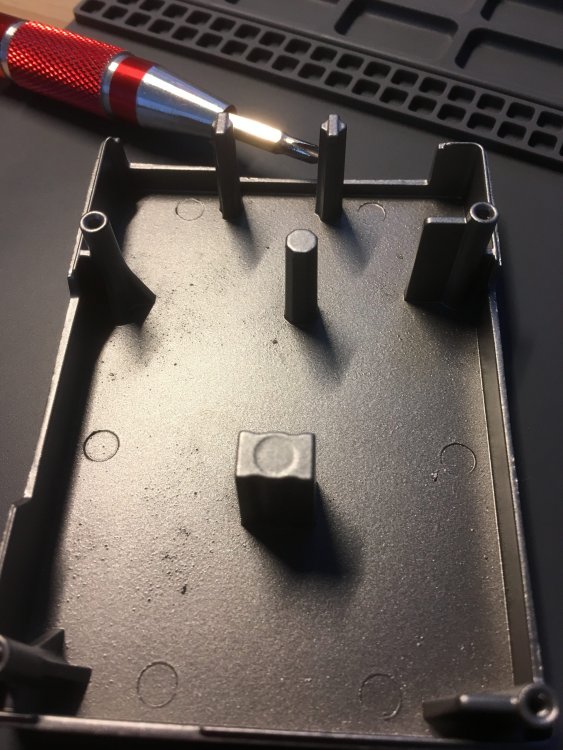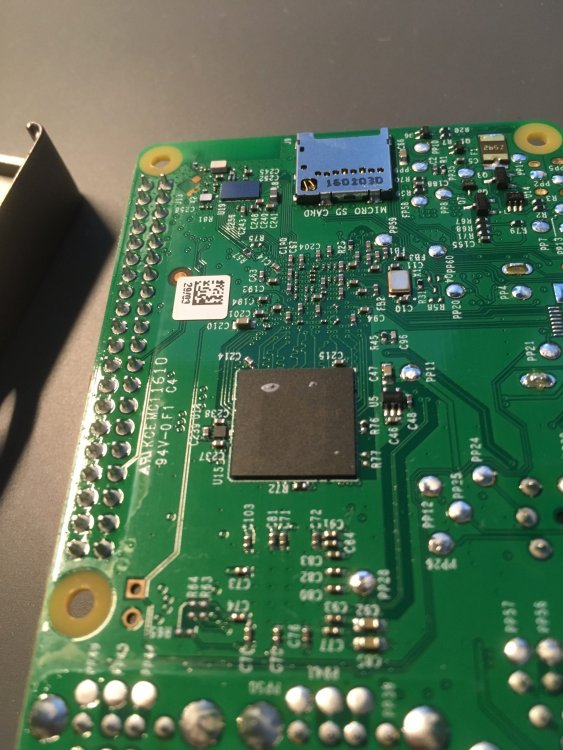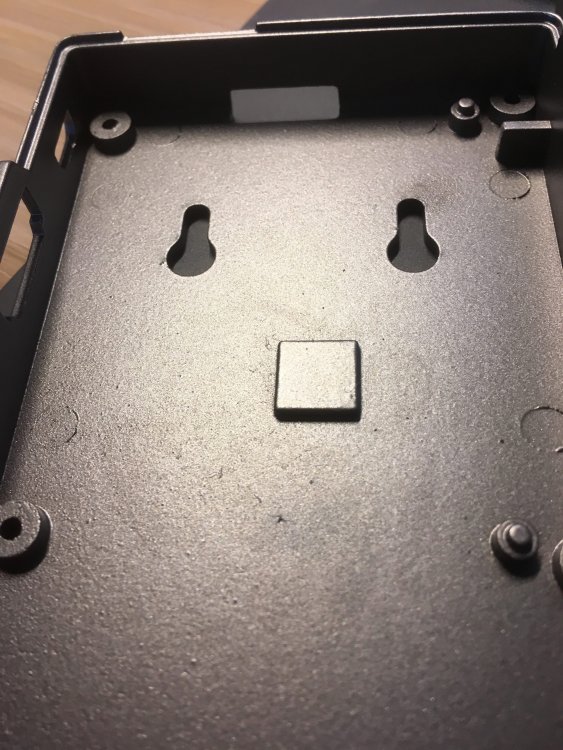
Igor_K
Members-
Posts
83 -
Joined
-
Last visited
Content Type
Forums
Store
Crowdfunding
Applications
Events
Raffles
Community Map
Everything posted by Igor_K
-
I've just tested my new case. Here is my preliminary review. TLDR: It is not good. 1) It does not fit perfectly, there is air between microchips and a case. I hope a thin thermal pad (0.5~1.0 mm) can help here. (As you can see in a photo there are almost no marks from a thermal paste on a chip) 2) Surfaces are not perfectly flat, they need be processed by a file tool or something. 3) Screws are thin and do not look reliable.
-
In practice, it causes some reliability issues. For example, sometimes a DNS server fails to reload because a network interface is down. I've implemented the workaround for this. https://mmonit.com/monit/ checks my DNS server. It works so far.
-
It is better slightly with the current version I do not see the Half Duplex bug but has issues still * mac address changes * network interface "blinks"
-
I've got 4 boards and all of them have 'flipping' network interfaces. ❯ ansible all -b -m shell -a 'journalctl | grep -Ec "Link is (Down|Up)"' dns01 | SUCCESS | rc=0 >> 1544 nanotor | SUCCESS | rc=0 >> 61 monitor | SUCCESS | rc=0 >> 2 dns02 | SUCCESS | rc=0 >> 136 Three of them are Armbian and 4-th has FriendlyElec's Ubuntu 16.04 Kernels are `4.14.18-sunxi` and `4.14.0` respectively. I doubt it can be a hardware issue, all boards a connected to the one hub, no issue on other boards (RPI and Odroid) from this hub. Also, I do not use network-manager
-
@tkaiser It is a fair point.
-
@tkaiser my Nanopi Neo boards use 2mm thermal pad. It just works.
-
I've got a practical reason to prefer a unibody case. It is a dust. My RPI3 is a media center for my family. It lives behind my TV or it travels with us. In both cases, I would prefer something without too many vents. If it does not fit well I hope I will be able to fix it with thermal glue and copper plates.
-
I wonder what is the purpose of these new mounting holes? Nice. I've just thought about a 1Gb upgrade for my Neo.
-
Yes it was a great one (It is available on aliexpress also https://www.aliexpress.com/item/Raspberry-Pi-3-Aluminum-Case-Silver-Case-Metal-Enclosure-for-RPI-3-Model-B-Compatible-with/32825338978.html) I bought this one https://www.aliexpress.com/item/Raspberry-Pi-3-Model-B-Cast-Aluminum-Case/32683284505.html I'm waiting for shipping still. I hope I would provide a better heatsink without a fan.
-
I've got 2 dnscrypt-proxy running in my home network. Both are NanoPi NEO (RAM 512Mb). They are idle almost all the time. the traffic as about 10 Kib per server. 100Mb is enough for sure. I suspect this is a setup issue.
-
@tkaiser This was a surprise for me as well. I'm going to re-test it more carefully this week. There is a chance still that I did something wrong.
-
@tkaiser I tried `ubuntu-16.04.3-4.14-minimal-odroid-xu4-20171213` but disk I/O was slower, it lacks some armbian tweaks apparently.
-
BTW There is a simple hack, I bought a good PSU (Mean Well) locally, so I saved few bucks on shipping. PSU is not a very lightweight stuff.
-
I doubt you will notice a real difference in performance. For me, HC1 has a superior form factor and a heat sink.
-
The node is in sync now so it took 12 days.
-
Yes you can, a default route is needed only to connect outside of your network.
-
Grafana and Prometheus, works like a julie and a peanut butter.
-
I've got HC1. It works well so far. It runs for about 10 days or so and it is syncing still. I would say that apparently, any board with 1Gb RAM and 4 cores would work well. I'm not sure about storage but seems like USB 2.0 would work also. Some stats from my HC1,
-
There is no need for reboot, systemctl daemon-reexec just works
-
My project is for education so I'm not an expert here however from my understanding it is irrelevant for a full node. Hashing power is important for miners. A full node performs transaction validation which does not involve much hashing (or hashing at all) http://chimera.labs.oreilly.com/books/1234000001802/ch08.html#_validating_a_new_block
-
@TonyMac32 could you compare Rock64 and Odroid XU4 please. I see both in your signature.
-
Thank you for sharing. I like the tower what is the enclosure? HC-1 and XU4 have the same hardware so there is no difference almost. A full node needs storage the size of bitcoin transaction data is more than 150Gb now. IMO HC1 is just more convenient because of its form factor. what about CPU performance? Rock64 vs HC/XU4 ?
-
After some research on the forum I think the best option is Odroid HC1 1) Great support from the community and the vendor 2) Good CPU performance 3) It has no "power over micro-USB" issue 4) Good HDD performance Rock64 is the second candidate, 4 GB RAM looks appealing. I'm not sure about CPU performance thou' Please share your thoughts.
-
Thank you. It is a very good point, but in my case, it is not that important. I've decided to buy a switching power supply like Mean Well or something. I've got about 4-5 SBC up and running now. Apparently, it is worth to invest in a good PSU.
-
Hi there, I'm going to run a full bitcoin node on ARM board so on the first sight requirements are: 1) it is in stock now 2) 2 Gb RAM 3) CPU performance and Stability under high load 4) USB 2.0 (or better) for an external storage 5) ethernet on board as for now my short list is 1) Odroid XU4 or HC1 (C1 was used for bitnodes as far as I know) 2) ASUS Tinker 3) Orange Pi Prime (?) 4) NanoPi K2 5) Rock64 (4Gb) I'm not sure about OPI Prime b/c I've found some reports on the forum about stability issues. Also it is sold out at the moment. I'm open for your suggestions and thoughts. Thank you in advince.








